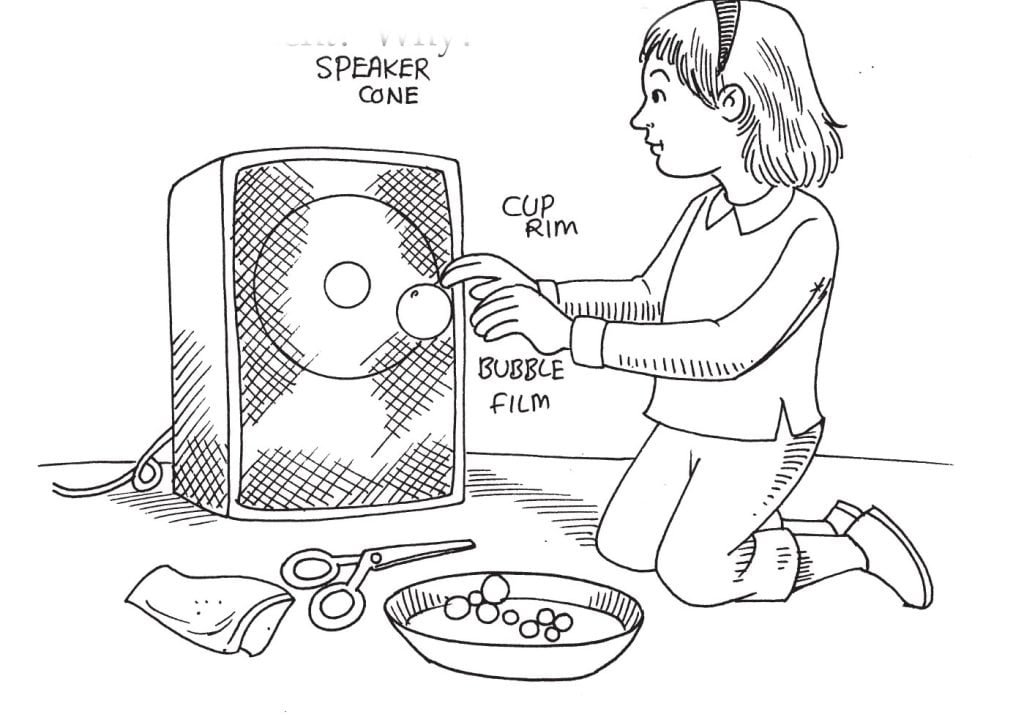
Have you ever removed the front cloth or grill covering of a speaker cabinet? If so, you exposed the sound-pushing surface of the speaker. Turn on the stereo and the speakers vibrate back and forth. The louder the sound, the greater the movement. In this experiment, you’ll construct a device that will also move with the music. Unlike the plastic or cardboard speaker cone, your device will be made from something slightly more fragile-soap bubble film!
Things Required:
Paper drinking cup
Bubble solution
Pair of scissors
Speaker
A shallow plate
Directions:
Use your scissors to cut off a “collar” from the rim of the cup. The collar should be about 1-inch wide and form a continuous round band.
Pour some bubble solution in a shallow plate. Set the “lip” side of the collar into the solution. Turn on a nearby sound system. Make sure the sound isn’t too loud, or else you may damage your hearing.
Carefully raise the collar so that a film may form across the rim opening. While holding the outside of the rim, position the film in front of the speaker. What happens to the bubble film? How might changes in the volume affect the film? Do you think low pitches or high pitches will cause more movement? Why?
This Is What Happens:
Bubble film is a very thin surface made from water and soap particles. Since it is lean and light, it requires very little energy to get it moving. As the speaker cone moved in and out, it vibrated surrounding air particles. An energy wave was formed. As this wave moved outward, it struck the bubble film, causing it to vibrate in a pattern that copied the intensity of the sound.

